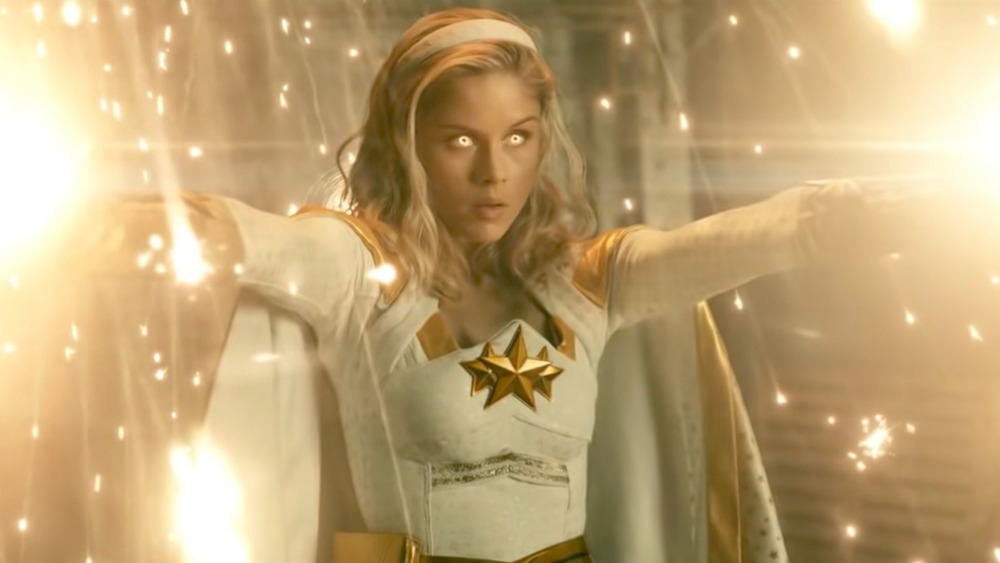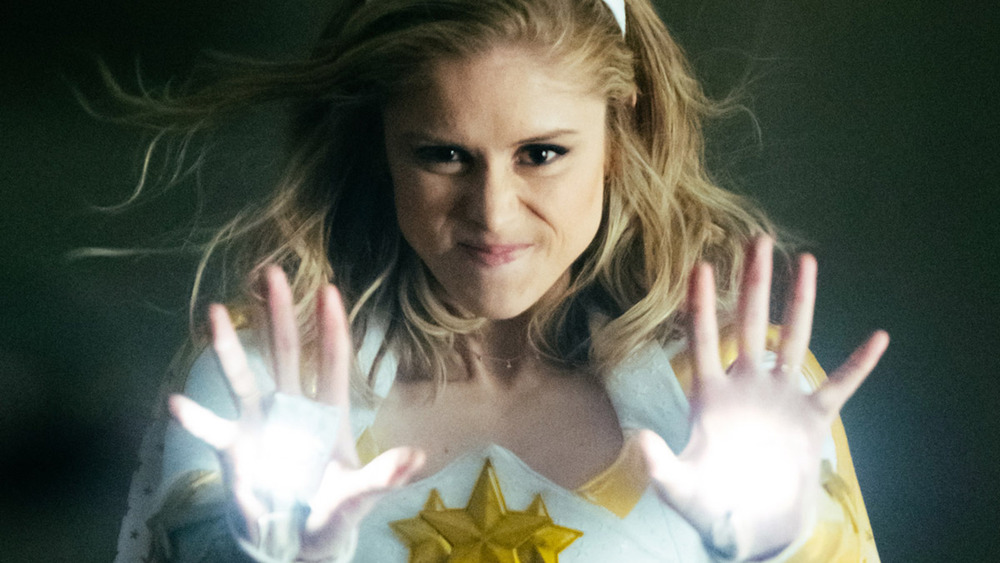What Actually Makes Starlight's Eyes And Hands Glow On The Boys
Amazon Prime Video's The Boys is completely packed with fine print — to the point that the sophomore season of the irreverent superhero series alone has enough easily missed small details to keep fans searching while they wait for season 3. Alongside all the questions lingering about the ending of season 2, there are long-standing issues baked into the series' very universe — like, "how exactly, do all those superpowers work?" The Boys has generally been heavy on the character drama, and light on the fictional physics.
Take Starlight (Erin Moriarty), the most moral Supe of The Seven. Fittingly enough, her powers are light-themed. Apart from being able to generate intense, blinding bursts of light, she comes with the rave-ready feature of glowing hands and eyes. To discover the truth about Starlight's glow, Looper reached out to Dr. Jed Macosko, Professor of Physics at Wake Forest University. Dr. Macosko has already looked into the secrets behind Starlight's powers, and he was kind enough to return to the subject and explain what makes Starlight's eyes and hands glow on The Boys.
Starlight's glow is bioluminescence with a twist
Dr. Macosko tells us that Starlight's glow is essentially a form of bioluminescence (one part of the secret language of fish), which is caused by luciferin molecules. According to him, "Starlight's luciferins most closely resemble the tetrapyrroles found in the 'the phosphorescence of the seas' you might see at night when ocean waves are crashing."
Dr. Macosko also has an explanation for Starlight's ability to use her glow to create offensive light bursts, by way of microscopic, electrical cellular membrane "pockets" known as scintillons. "There are dozens of ways that living creatures turn energy into light, but scintillons are one of the best ways to turn an electrical gradient into photons," he says. "These amazing, microscopic infoldings of the cellular membrane hold high concentrations of light-emitting tetrapyrroles. What is crucial, though, is that the tetrapyrroles don't get oxidized without first giving off light. If they do, the electric burst would find nothing but already oxidized molecules and would be wasted. Thankfully, the scintillons are also chock-full of special proteins that grab the tetrapyrroles and protect them until the electric burst is ready."
Indeed, scintillons would expain both Starlight's bioluminescence and her power bursts. "To put it in simple terms, Starlight absorbs energy in the form of electricity, part of which she can send back out like the human-capacitor she is, and part of which can drive her scintillon-enabled bioluminescence." Dr. Macosko also reminds us that we can spot the same "superpower" in nature: "Next time you are standing on a beach at night and see a blue, glowing wave, remember scintillons, tetrapyrrole luciferins of the tetrapyrrole variety, are what make Starlight's eyes and hands glow!"

